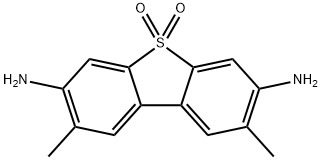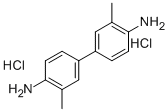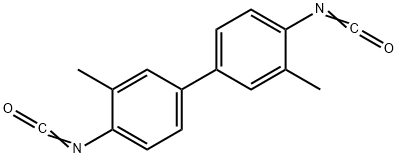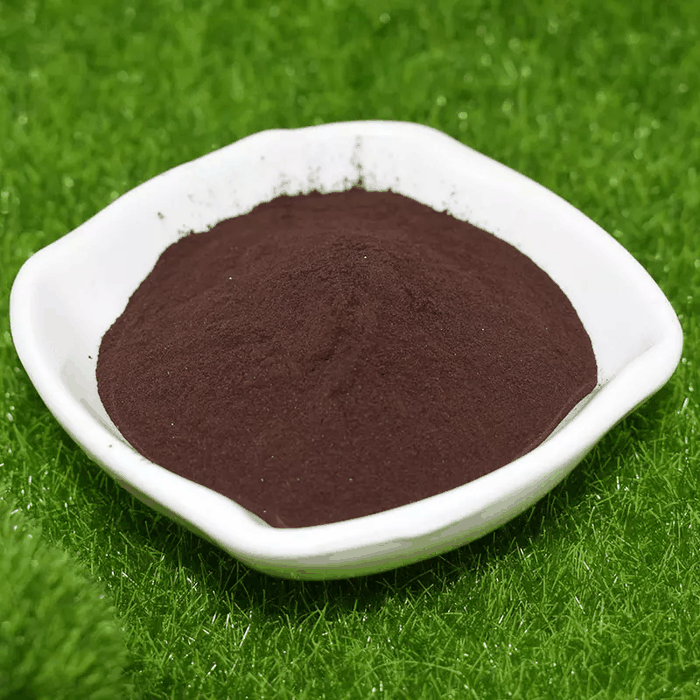O-Tolidine
Synonym(s):3,3′-Dimethylbenzidine;4,4′-Bianisidine;Ellms-Hauser solution
- CAS NO.:119-93-7
- Empirical Formula: C14H16N2
- Molecular Weight: 212.29
- MDL number: MFCD00014773
- EINECS: 204-358-0
- SAFETY DATA SHEET (SDS)
- Update Date: 2025-01-27 09:38:02

What is O-Tolidine?
Description
o-Tolidine, also called orthotolidine or 2-tolidine, is a chemical compound with the molecular formula (C6H4(CH3)NH2)2. It is a white to reddish-colored, combustible, aromatic amine that emits toxic fumes of nitrogen oxides when heated to decomposition. Several isomers are known; the 3-tolidine derivative is also important commercially. It is a colorless compound although commercial samples are often colored. It is slightly soluble in water. It forms salts with acids, such as hydrochloride, which is commercially available. 2-Tolidine can be produced by a benzidine rearrangement from a hydrazine derivative derived from 2-nitrotoluene.
Chemical properties
o-Tolidine is a white to reddish crystal or powder and has an aniline-like odor. It is soluble in alcohol, ether, and dilute acid, but only slightly soluble in water. It has a tendency to darken when exposed to air and is commonly utilized in paste or wet cake form. This compound serves as a fundamental component for the production of numerous dyes.
The Uses of O-Tolidine
o-Tolidine is used extensively in the manufacture of dyes. It is also used as a reagentfor the analysis of gold and free chlorine inwater.
The Uses of O-Tolidine
3,3'-Dimethylbenzidine be used for preparation polyimide and epoxy resin material.
Preparation
There are two commonly used methods for producing o-Tolidine. The first method involves reducing ortho-nitrotoluene to 1,2-diorthotolylhydrazine, which is then rearranged with acid. The second method involves reducing o-nitrotoluene using zinc dust and caustic soda, then converting the resulting hydrazotoluene to o-Tolidine by boiling it with hydrochloric acid. Once either of these methods is completed, o-Tolidine can be extracted and purified through techniques such as solvent extraction and recrystallization.
Definition
ChEBI: 3,3'-Dimethylbenzidine is a member of biphenyls.
General Description
3,3'-dimethylbenzidine appears as white to reddish crystals or crystalline powder or a light tan powder. (NTP, 1992)
Air & Water Reactions
Insoluble in water.
Reactivity Profile
C.I. 37230 is sensitive to exposure to light. May be sensitive to prolonged exposure to air. A weak base that forms salts with hydrochloric acid or sulfuric acid. C.I. 37230 can be acetylated. Incompatible with strong agents .
Hazard
Eye, bladder and kidney irritant, bladder cancer, and methemoglobinemia. Possible carcinogen.
Health Hazard
The information on toxicity and carcinogenicity of o-tolidine is very little. o-Tolidineoften contains other biphenylamine contaminants. Its structure and chemical propertiesare similar to those of benzidine. The toxicproperties are therefore expected to be similar to those of benzidine.
o-Tolidine is absorbed into body throughthe skin, respiratory, and gastrointestinaltract. The acute oral and dermal toxicity wasmoderate in experimental animals. An oralLD50 value in rats is within the range of400 mg/kg.
o-Tolidine produced bladder cancer in testspecies. Also, cancers in other tissues werenoted in some animals. ACGIH lists thissubstance as a suspected human carcinogen.
Fire Hazard
Flash point data for C.I. 37230 are not available; however, C.I. 37230 is probably combustible.
Safety Profile
Confirmed carcinogen with experimental carcinogenic and tumorigenic data. Poison by intraperitoneal route. Moderately toxic by ingestion. Human mutation data reported. When heated to decomposition it emits toxic fumes of NOx.
Potential Exposure
Over 75% of o-tolidine is used as a dye and as an intermediate in the production of rubber products, dyestuffs, pigments and pesticides. Approximately 20% of o-tolidine is used in the production of polyurethane-based high-strength elastomers, coatings, and rigid plastics. o-Tolidine has also been used in small quantities in chlorine test kits by water companies and swimming pool owners. Used as a laboratory agent to detect blood.
Carcinogenicity
3,3′-Dimethylbenzidine is reasonably anticipated to be a human carcinogen based on sufficient evidence of carcinogenicity from studies in experimental animals.
Shipping
UN2811 Toxic solids, organic, n.o.s., Hazard Class: 6.1; Labels: 6.1-Poisonous materials, Technical Name Required. UN3077 Environmentally hazardous substances, solid, n.o.s., Hazard class: 9; Labels: 9-Miscellaneous hazardous material, Technical Name Required.
Purification Methods
Dissolve the tolidine in *benzene by percolation through a column of activated alumina and crystallise it from *benzene/pet ether. [Beilstein 13 IV 410.]
Incompatibilities
Incompatible with oxidizers (chlorates, nitrates, peroxides, permanganates, perchlorates, chlorine, bromine, fluorine, etc.); contact may cause fires or explosions. Keep away from alkaline materials, strong bases, strong acids, oxoacids, epoxides, strong reducing agents.
Waste Disposal
Dissolve in flammable solvent and spray into firebox of an incinera tor equipped with afterburner and scrubber. Consult with environmental regulatory agencies for guidance on acceptable disposal practices. Generators of waste containing this contaminant (≥100 kg/mo) must conform with EPA regulations governing storage, transportation, treatment, and waste disposal.
Properties of O-Tolidine
| Melting point: | 128-131 °C(lit.) |
| Boiling point: | 300.5 °C |
| Density | 0.9678 (rough estimate) |
| refractive index | n |
| Flash point: | 244 °C |
| storage temp. | -20°C |
| solubility | 2% HCl: 10 mg/mL, clear |
| form | powder (may contain lumps) |
| Colour Index | 37230 |
| pka | 4.59±0.10(Predicted) |
| color | light brown |
| Water Solubility | Slightly soluble in water. |
| Merck | 14,9514 |
| BRN | 2210640 |
| Exposure limits | TLV-TWA none; carcinogenicity: A2 — Suspected Human Carcinogen (ACGIH), Animal
Limited Evidence (IARC). |
| NIST Chemistry Reference | [1,1'-Biphenyl]-4,4'-diamine, 3,3'-dimethyl-(119-93-7) |
| IARC | 2B (Vol. 1, Sup 7) 1987 |
| EPA Substance Registry System | 3,3'-Dimethylbenzidine (119-93-7) |
Safety information for O-Tolidine
| Signal word | Danger |
| Pictogram(s) |
 Exclamation Mark Irritant GHS07  Health Hazard GHS08  Environment GHS09 |
| GHS Hazard Statements |
H302:Acute toxicity,oral H350:Carcinogenicity H411:Hazardous to the aquatic environment, long-term hazard |
| Precautionary Statement Codes |
P202:Do not handle until all safety precautions have been read and understood. P264:Wash hands thoroughly after handling. P264:Wash skin thouroughly after handling. P270:Do not eat, drink or smoke when using this product. P273:Avoid release to the environment. P301+P312:IF SWALLOWED: call a POISON CENTER or doctor/physician IF you feel unwell. P308+P313:IF exposed or concerned: Get medical advice/attention. |
Computed Descriptors for O-Tolidine
| InChIKey | NUIURNJTPRWVAP-UHFFFAOYSA-N |
O-Tolidine manufacturer
ARRAKIS INDUSTRIES LLP
Related products of tetrahydrofuran








You may like
-
 o-Tolidine 98%View Details
o-Tolidine 98%View Details -
 o-Tolidine extrapure AR CAS 119-93-7View Details
o-Tolidine extrapure AR CAS 119-93-7View Details
119-93-7 -
 o-Tolidine CAS 119-93-7View Details
o-Tolidine CAS 119-93-7View Details
119-93-7 -
 o-Tolidine CAS 119-93-7View Details
o-Tolidine CAS 119-93-7View Details
119-93-7 -
 o-Tolidine CAS 119-93-7View Details
o-Tolidine CAS 119-93-7View Details
119-93-7 -
 o-Tolidine CAS 119-93-7View Details
o-Tolidine CAS 119-93-7View Details
119-93-7 -
 o-Tolidine 98% CAS 119-93-7View Details
o-Tolidine 98% CAS 119-93-7View Details
119-93-7 -
 o-Tolidine, GR 99%+ CAS 119-93-7View Details
o-Tolidine, GR 99%+ CAS 119-93-7View Details
119-93-7